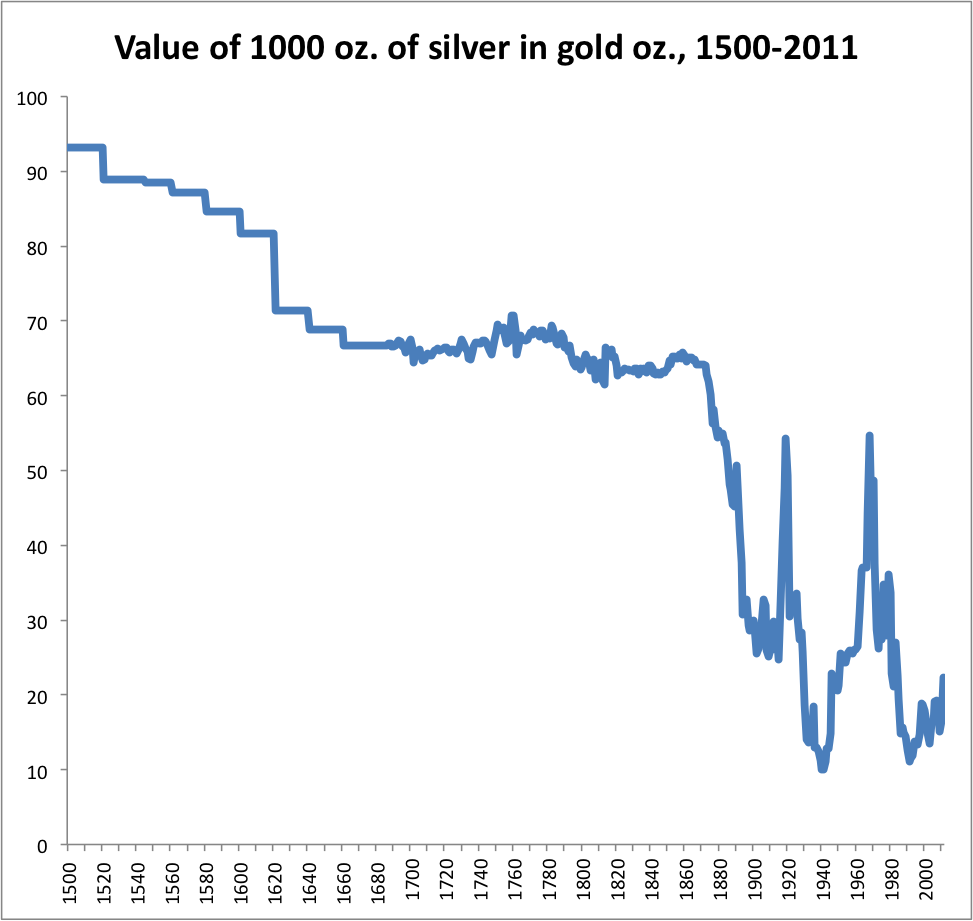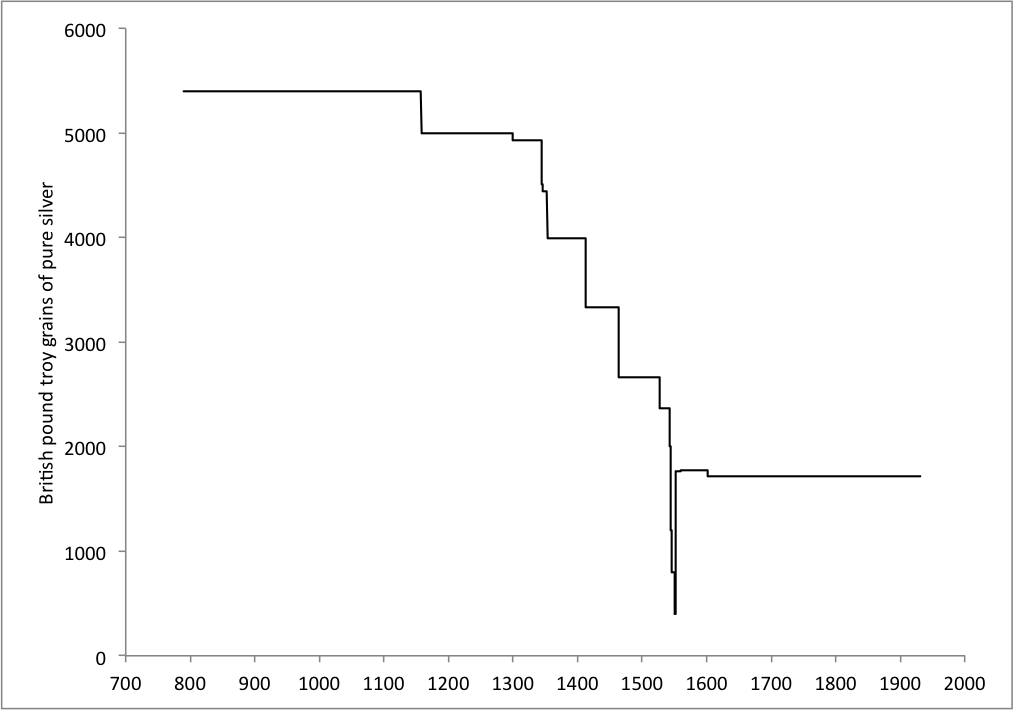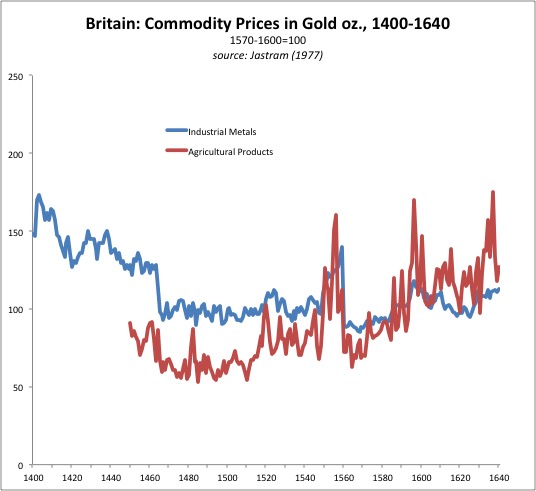Today we have an expanded look at the silver:gold ratio, from 1500 to 2011. This covers the Spanish silver boom in the New World during the sixteenth and seventeenth centuries.
Sources are:
measuringworth.com
U.S. Mint. 1927. Annual Report of the Director of the Mint. U.S. Mint. p. 188.
J.D. Magee, Journal of Political Economy, Vol. 18. No. 1 (Jan 1910), pp.50-58
Steven Reti. 1998. Silver and Gold: The Political Economy of International Monetary Conferences, 1867-1892. Praeger.
Indianapolis Monetary Convention. 1898. Report of the Monetary Commission of the Indianapolis Convention. University of Chicago Press, Chicago.

We can see the decline in the value of silver vs. gold after 1500, likely related to the large increase in silver production during that time. Silver production increased by about ten times between 1500 and 1600, while gold production increased by only about 50% during the same time period. From year to year, however, or even over a period of decades, the change was not particularly great.

Various tales of a “price revolution” caused by this silver mining seem to reflect primarily the debasement of coinage during the same period. The silver content of the British pound, for example, was reduced to about one-third during this period.

Prices in terms of gold, after correcting for these issues, didn’t change that much.


